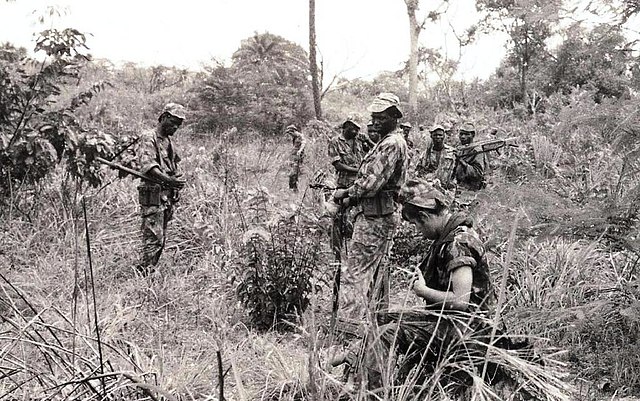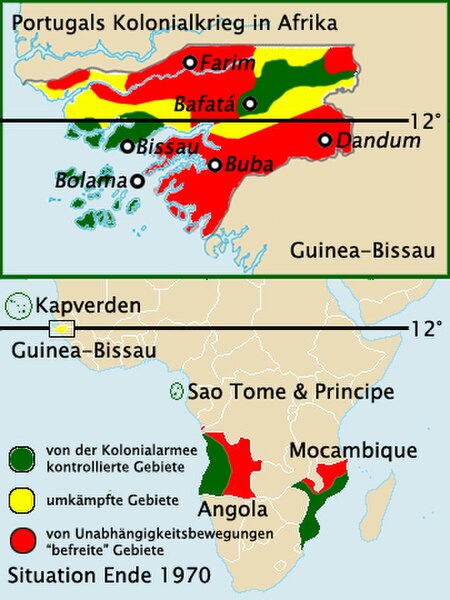People have inhabited the region now known as Guinea-Bissau for thousands of years. In the 13th century, it became a province of the Mali Empire that later became independent as the Empire of Kaabu. Portugal claimed the region beginning in the 1450s. During most of this period, Portuguese control of the region was limited to a number of forts along the coast. Portugal gained full control of the mainland after the pacification campaigns of 1912–15. The offshore Bijago islands were not colonised until 1936. After independence in 1974, the country was controlled by a single-party system until 1991. The introduction of multi-party politics in 1991 brought the first multi-party elections in 1994. A civil war broke out from 1998 to 1999.
Portuguese Colonial War in Portuguese Guinea, 1968
Portuguese-held (green), disputed (yellow) and rebel-held areas (red) in Portuguese-Guinea and other colonies 1970
Presidential palace in Bissau damaged during the civil war of 1998-99 in 2007
Sundiata Keita was a prince and founder of the Mali Empire. He was also the great-uncle of the Malian ruler Mansa Musa, who is usually regarded as the wealthiest person of all time, although there are no reliable ways to accurately calculate his wealth.
A modern balafon. The balafon plays an important role in the Epic of Sundiata. The magical balafon belonging to Soumaoro Kanté was stolen by Sundiata Keita's griot - Balla Fasséké and taken to Mandinka country.
Terracotta archer figure from Mali (13th-15th century), with a quiver on his back. The bow and quiver of arrows were the symbols of power in Imperial Mali.





